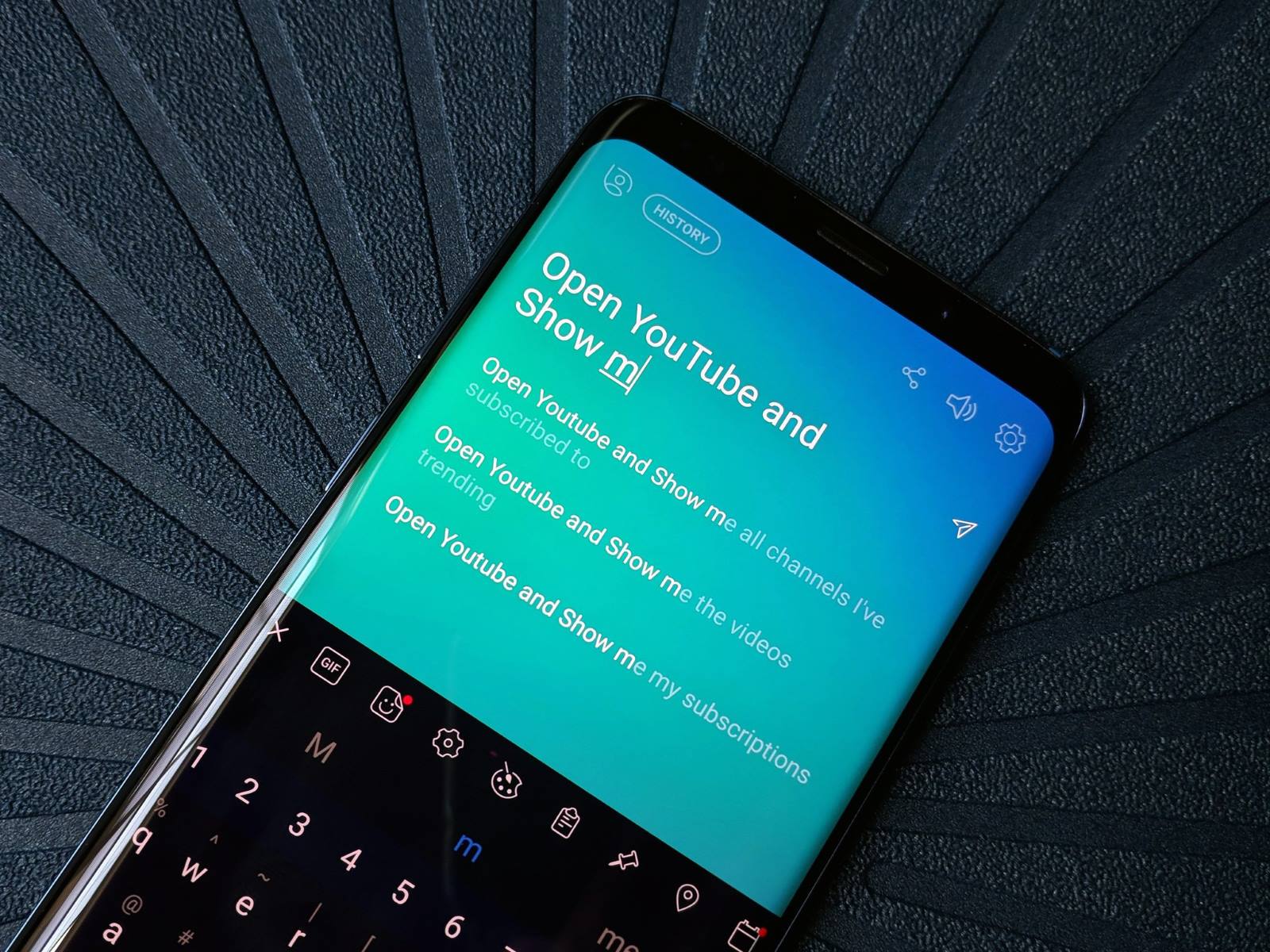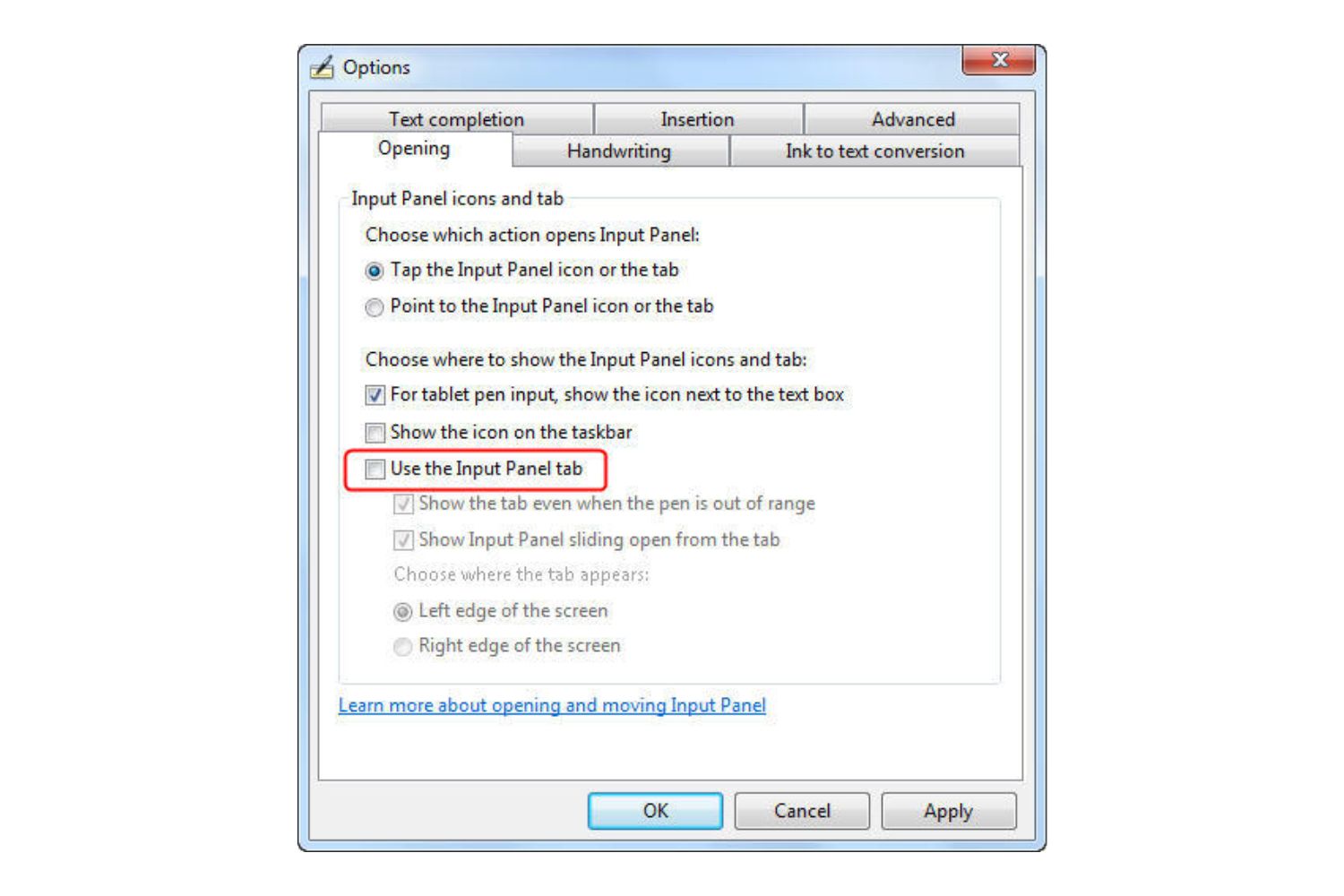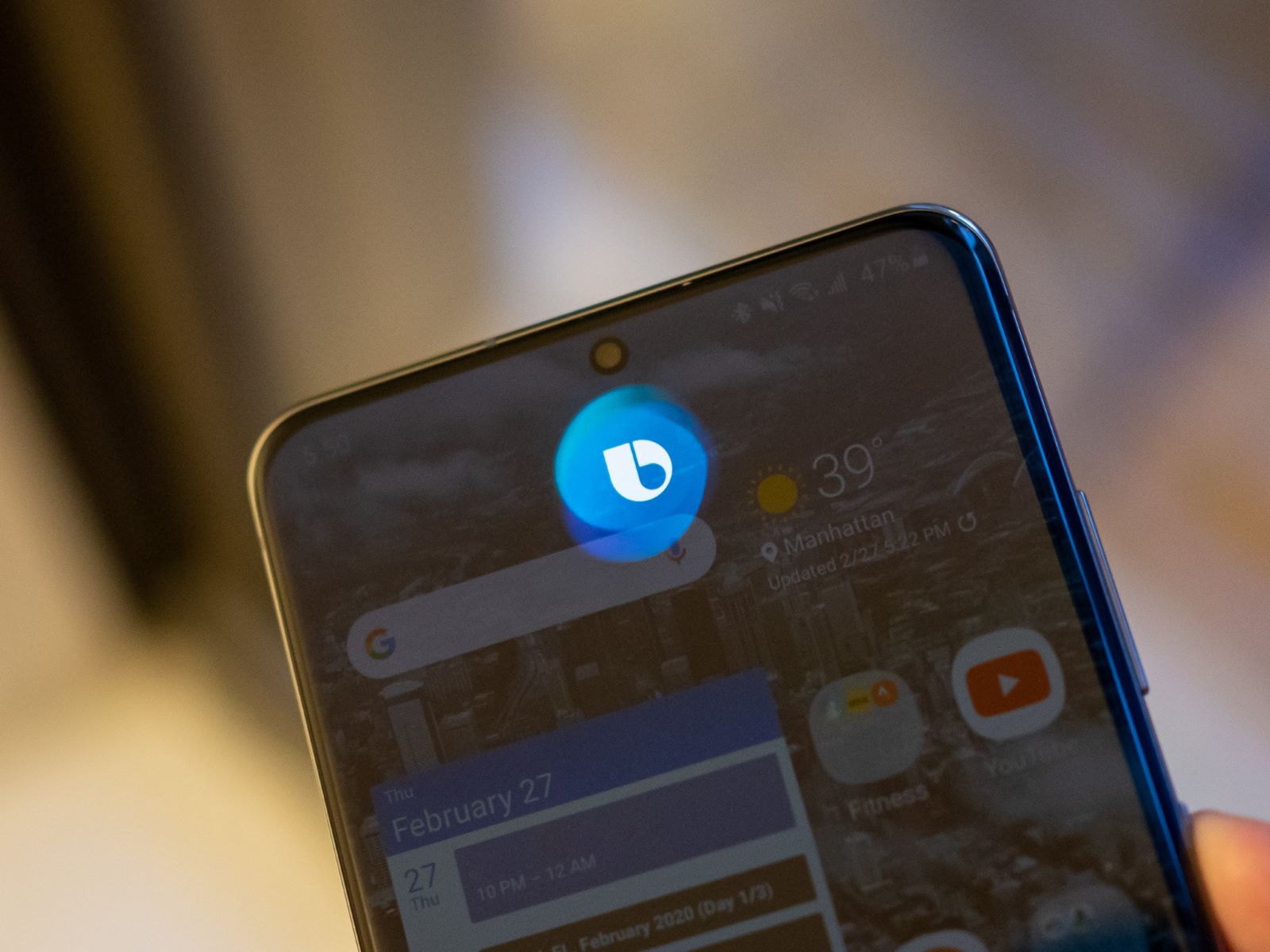Introduction
Welcome to our guide on how to get rid of your smartphone! In today’s fast-paced digital world, smartphones have become an integral part of our lives. They provide us with instant access to information, communication, and entertainment. However, excessive smartphone use can have negative impacts on our mental and physical well-being, productivity, and relationships. If you’re finding that your smartphone has taken over your life and you’re ready to make a change, you’ve come to the right place.
In this guide, we’ll provide you with practical tips and strategies to help you reduce your smartphone usage. Whether you want to break free from the constant distraction, regain control of your time, or simply establish a healthier relationship with technology, we’ve got you covered. Our goal is to equip you with the tools and mindset needed to successfully eliminate or significantly reduce your smartphone dependency.
Before we dive into the steps to get rid of your smartphone, it’s essential to emphasize that our approach is not anti-technology. Smartphones can be incredibly useful and enrich our lives in many ways. The aim here is to find a healthy balance that allows you to enjoy the benefits of technology while minimizing its negative effects.
Throughout this guide, we’ll explore various methods to help you detach from your smartphone, such as evaluating your smartphone use, setting goals, identifying triggers, finding alternative activities, establishing boundaries, and practicing mindfulness. By implementing these strategies, you’ll be on your way to regaining control over your life and creating a healthier relationship with technology.
So, if you’re ready to embark on this journey of freeing yourself from excessive smartphone use, let’s dive in and discover the steps you can take to reclaim your time, focus, and overall well-being.
Evaluate Your Smartphone Use
The first step in getting rid of your smartphone is to evaluate your current usage. Take a moment to reflect on how much time and attention you devote to your device. Ask yourself if your smartphone use is excessive or interfering with other areas of your life, such as work, relationships, or hobbies.
Consider tracking your daily smartphone usage for a week. This can help you gain insight into the amount of time you spend on your device and identify patterns or trends. There are various apps available that track your screen time and provide detailed reports on your smartphone usage. This data can be eye-opening and serve as a wake-up call to the extent of your dependency.
Evaluate the purpose of your smartphone use as well. Are you primarily using it for essential tasks like communication and productivity, or do you find yourself constantly scrolling through social media, playing games, or binge-watching videos? Being aware of the reasons behind your smartphone use can help you identify areas where you can make adjustments and set boundaries.
Another aspect to consider is how your smartphone use makes you feel. Notice if you experience anxiety, stress, or irritability when you’re unable to access your phone. Pay attention to any negative impacts on your mental well-being, such as a lack of focus, decreased productivity, or difficulty disconnecting from work or social media.
By evaluating your smartphone use, you’ll gain valuable insights into your habits and dependencies. This self-awareness is crucial in understanding the changes you need to make and setting realistic goals for reducing your smartphone use. Remember, the goal is not to completely eliminate smartphone use, but rather to find a healthy and balanced approach that aligns with your priorities and contributes to your overall well-being.
Set Goals for Reducing Smartphone Use
Once you’ve evaluated your smartphone use and identified areas where you’d like to make changes, it’s time to set goals for reducing your smartphone dependency. Setting clear and achievable goals will provide you with a roadmap to follow and keep you motivated throughout the process.
Start by determining your intentions and priorities. Ask yourself why you want to reduce your smartphone use and what you hope to gain from this change. Maybe you want to be more present in your daily life, improve productivity, or enhance your relationships. Understanding your motivations will help you set meaningful and personal goals.
Make your goals specific and measurable. For example, instead of saying, “I want to use my smartphone less,” specify a target, such as “I will limit my daily screen time to two hours.” This will give you a clear benchmark to track your progress and hold yourself accountable.
Ensure your goals are realistic and attainable. Don’t set yourself up for disappointment by aiming for drastic changes overnight. Gradual steps are more sustainable and manageable. Consider starting with small increments, such as reducing your screen time by 15 minutes each day, and then gradually increasing that amount over time.
It can also be helpful to set both short-term and long-term goals. Short-term goals allow you to celebrate small victories along the way and help build momentum. Long-term goals keep you focused on the bigger picture and provide a sense of direction. For instance, a short-term goal could be to refrain from using your smartphone during dinner, while a long-term goal might be to have one designated “tech-free” day per week.
Write down your goals and keep them visible as a constant reminder. Use sticky notes, create digital reminders, or even set them as your phone’s wallpaper. Regularly review your goals to stay on track and regularly assess your progress. Celebrate your achievements and make adjustments to your goals as needed.
Remember, setting goals is a crucial step in reducing your smartphone use. They provide direction, motivation, and a sense of accomplishment. By setting realistic and meaningful goals, you’ll be well-positioned to take control of your smartphone habits and create a healthier relationship with technology.
Identify Triggers and Remove Temptations
To successfully reduce your smartphone use, it’s crucial to identify the triggers that prompt you to reach for your device. Triggers can be specific situations, emotions, or habits that lead to mindless scrolling or excessive smartphone use. By recognizing these triggers, you can develop strategies to avoid or overcome them.
Start by reflecting on the situations or emotions that often tempt you to use your smartphone. Is it boredom, stress, loneliness, or the need for constant entertainment? Pay attention to the patterns and triggers that contribute to your smartphone dependency. By understanding the underlying reasons behind your smartphone use, you can address them more effectively.
Once you’ve identified your triggers, it’s time to create a plan to remove the temptations. Here are some strategies that can help:
- Avoid keeping your smartphone within arm’s reach when you’re at home or work. Instead, place it in a different room or in a designated drawer where it’s less accessible.
- Turn off non-essential notifications to minimize distractions. Only keep notifications for important calls or messages.
- Use airplane mode or activate the “Do Not Disturb” feature during focused activities or designated periods of the day to reduce interruptions.
- Designate specific times for checking and responding to emails, messages, and social media. For example, you may allocate 30 minutes in the morning and 30 minutes in the evening for this purpose, rather than continuously checking throughout the day.
- Consider using apps or features that limit or block certain apps or websites during specific times of the day. This can help you stay focused and avoid mindless scrolling.
In addition to removing temptations, it’s important to replace smartphone use with alternative activities. Find activities that bring you joy, relaxation, or fulfillment. Engage in hobbies, spend time outdoors, read books, practice mindfulness or meditation, or connect with loved ones face-to-face. By substituting smartphone use with activities that truly enrich your life, you’ll be less likely to succumb to the temptation of constant screen time.
Remember, identifying triggers and removing temptations is a crucial step in breaking free from excessive smartphone use. By implementing strategies to avoid or overcome these triggers, you’ll create an environment that supports your goal of reducing smartphone dependency. Stay aware and proactive, and soon you’ll find yourself less reliant on your device and more present in your daily life.
Find Alternative Activities
One of the most effective ways to reduce smartphone use is to find alternative activities that bring you joy, fulfillment, and a sense of connection. By replacing your smartphone habits with these activities, you’ll be less tempted to reach for your device out of boredom or habit. Here are some ideas to help you find alternative activities:
- Pursue hobbies: Rediscover or explore new hobbies that you enjoy. Whether it’s painting, gardening, cooking, playing a musical instrument, writing, or knitting, engaging in activities that you’re passionate about can provide a fulfilling and constructive way to spend your time.
- Get active: Physical activity is not only beneficial for your health but also a great way to distract yourself from smartphone temptations. Go for a walk or run, practice yoga, join a fitness class, or engage in any form of exercise that you enjoy. Not only will it keep you physically active, but it can also help clear your mind and reduce stress.
- Read books: Reading is a fantastic way to immerse yourself in a different world and exercise your imagination. Choose books that align with your interests, whether it’s fiction, non-fiction, self-help, or biographies. Set aside dedicated time each day or before bed to indulge in a good book.
- Explore the outdoors: Nature offers endless opportunities for exploration and tranquility. Take a hike, go for a bike ride, have a picnic in the park, or simply sit in your backyard and observe the world around you. Spending time in nature can provide a refreshing break from technology and help rejuvenate your mind and body.
- Nurture relationships: Allocate quality time to nurture and strengthen your relationships. Plan outings with friends or family, engage in meaningful conversations, or participate in activities together. Building and maintaining meaningful connections with loved ones can bring immense joy and fulfillment.
- Practice mindfulness and meditation: Incorporating mindfulness and meditation practices into your daily routine can help calm your mind, reduce stress, and increase your awareness. Take a few moments each day to focus on your breath, practice gratitude, or engage in guided meditation. These practices can help you become more present and less reliant on your smartphone for distraction.
The key is to find activities that align with your interests and values. Experiment with different options and explore what brings you joy and fulfillment. Remember, reducing smartphone use doesn’t mean eliminating all digital activities but rather finding a balance that allows you to engage in activities that enhance your well-being and personal growth.
By actively participating in alternative activities, you’ll find yourself less reliant on your smartphone for entertainment and connection. Embrace this opportunity to discover new passions, deepen existing interests, and create a more fulfilling and balanced lifestyle.
Create Boundaries and Establish Tech-Free Zones
Creating boundaries and establishing tech-free zones is a crucial step in reducing smartphone dependency. By setting clear guidelines and designated spaces free from technology, you can reclaim your time, focus, and relationships. Here are some strategies to help you create boundaries and establish tech-free zones:
- Define screen-free times: Dedicate specific times of the day or week as screen-free periods. This could be during meals, before bedtime, or a specific day of the week. Use this time to engage in meaningful activities, connect with loved ones, or simply relax without the distraction of your smartphone.
- Establish phone-free zones: Designate certain areas in your home or workspace as phone-free zones. For example, make your bedroom a technology-free sanctuary, ensuring that it remains a space for rest and relaxation rather than a source of digital distractions. Similarly, create phone-free areas in your office or study where you can concentrate on tasks without the constant interruption of notifications.
- Set boundaries with others: Communicate your intentions and boundaries regarding smartphone use with your family, friends, and colleagues. Let them know when you’ll be unavailable or when you prefer not to be disturbed by phone calls or messages. By setting these expectations, you establish a mutual understanding and respect for personal boundaries.
- Use technology intentionally: Instead of mindlessly scrolling through social media or falling down endless internet rabbit holes, use your smartphone intentionally and purposefully. Be mindful of the apps you use and choose ones that add value to your life. Delete or limit the use of apps that are time-wasters or cause unnecessary distractions.
- Practice digital detox: Consider taking regular breaks from technology by engaging in a digital detox. This could be a few hours, a whole day, or even a weekend without any screen time. Disconnecting from constant connectivity can help you reset, recharge, and gain a fresh perspective on your smartphone habits.
Remember, boundaries and tech-free zones are not about completely eliminating smartphone use, but rather finding a healthy balance between technology and your everyday life. They provide you with opportunities to be more present, focused, and connected with the world around you.
Implementing these strategies may take some time and adjustment, but with consistent effort, you’ll gradually build healthier habits and create a more intentional and fulfilling relationship with your smartphone.
Use Productivity Apps to Help Manage Time
In the digital age, smartphones not only contribute to distractions but can also be powerful tools in helping you manage your time more effectively. By leveraging productivity apps, you can enhance your focus, prioritize tasks, and stay organized. Here are some productivity app suggestions to help you better manage your time and reduce smartphone dependence:
- Task management apps: Utilize apps such as Todoist, Any.do, or Microsoft To Do to create to-do lists, set deadlines, and track your progress. These apps help you stay organized and prioritize tasks, reducing the need to constantly reach for your smartphone to remember what needs to be done.
- Time tracking apps: Install apps like Toggl, RescueTime, or Forest to track how much time you spend on specific apps or activities. These apps provide insights into your time usage and can help you become more aware of how much time you’re spending on your smartphone. They can also serve as reminders to stay focused and limit distractions.
- Focus and Pomodoro apps: Use apps like Focus@Will, Forest, or TomatoTimer that employ the Pomodoro Technique. These apps break your work or study sessions into intervals, typically 25 minutes, with short breaks in between. By working in focused bursts, followed by short breaks, you can improve productivity and reduce the urge to check your smartphone during task completion.
- Distraction-blocking apps: Install apps such as Freedom, Offtime, or Moment to block or limit access to certain apps or websites during specific times of the day. These apps can help you resist the temptation to mindlessly scroll through social media or get lost in other digital distractions.
- Note-taking and organization apps: Utilize apps like Evernote, Google Keep, or Microsoft OneNote to jot down ideas, make quick notes, and organize your thoughts. By having a centralized place for your notes and ideas, you can avoid searching for information on your smartphone and minimize distractions.
When selecting productivity apps, choose ones that align with your needs and preferences. Experiment with different apps to find the ones that resonate with you and enhance your productivity. It’s important to note that while these apps can be helpful, it’s crucial to use them with intention and not become overly reliant on technology for time management.
By incorporating productivity apps into your routine, you can harness the power of technology to optimize your time and reduce the impact of smartphone distractions. Maintain a healthy and balanced approach by utilizing these apps as tools to enhance your productivity, rather than allowing them to consume excessive attention and time.
Create a Support System
Embarking on the journey of reducing smartphone use can be challenging, especially in a world where constant connectivity has become the norm. That’s why it’s important to create a support system to help you stay motivated and accountable. Surrounding yourself with like-minded individuals who understand your goals and struggles can greatly increase your chances of success. Here are some ways to create a support system:
- Communicate with your loved ones: Talk to your family and friends about your desire to reduce smartphone use. Explain how it’s impacting your life and share your goals with them. Ask for their understanding and support in holding you accountable for your smartphone habits.
- Join online communities: Seek out online communities or forums focused on digital wellness, mindfulness, or reducing smartphone use. Connect with others who are on a similar journey and share experiences, tips, and challenges. These communities can provide valuable support, encouragement, and practical advice.
- Find an accountability partner: Ask someone you trust, such as a friend or family member, to be your accountability partner. Share your goals and progress with them regularly, and ask them to check in on your progress. Having someone to hold you accountable can help you stay motivated and committed.
- Participate in challenges: Look for challenges or events that focus on reducing smartphone use, such as “Digital Detox Week” or “Screen-Free Saturdays.” Participating in these challenges alongside others can create a sense of community and support as you work towards common goals.
- Attend support groups or workshops: Seek out local support groups or workshops that address smartphone addiction or digital wellness. These groups provide a safe space to share experiences, learn coping strategies, and receive support from others facing similar challenges.
Remember, creating a support system is about connecting with others who can offer understanding, encouragement, and accountability. It’s essential to find individuals or groups that align with your goals and values. By being part of a supportive network, you’ll have a strong foundation to rely on during difficult moments and celebrate your accomplishments along the way.
Reach out to others, both online and offline, and don’t hesitate to lean on your support system when needed. Utilize their wisdom, encouragement, and guidance to help you navigate the ups and downs of reducing smartphone use. Together, you can create a supportive environment that promotes a healthy relationship with technology and enhances your overall well-being.
Practice Mindfulness and Self-Care
In the hustle and bustle of our digital lives, it’s easy to lose touch with the present moment and neglect our own well-being. Incorporating mindfulness and self-care practices into your routine is essential in reducing smartphone dependence and creating a healthier relationship with technology. Here are some ways to practice mindfulness and self-care:
- Unplug and be present: Take regular breaks throughout the day to unplug from your smartphone and simply be present. Engage in activities that encourage mindfulness, such as mindful breathing, meditation, or grounding exercises. Tune in to your surroundings and savor the beauty of the present moment.
- Set aside time for self-care: Prioritize self-care activities that nourish your mind, body, and soul. This could include practicing yoga or other forms of physical exercise, taking relaxing baths, enjoying a hobby, reading, or spending time in nature. By carving out time for self-care, you’ll cultivate a sense of well-being and reduce the need for constant smartphone distractions.
- Establish a bedtime routine: Create a nighttime ritual that promotes relaxation and quality sleep. Disconnect from screens at least an hour before bedtime and engage in calming activities, such as reading a book, journaling, or practicing gratitude. Prioritizing restful sleep will help you start each day with more focus and clarity.
- Practice digital mindfulness: Be intentional and mindful in your smartphone use. Notice the sensations, thoughts, and emotions that arise when you reach for your device. Take deep breaths and ask yourself if you genuinely need to use your smartphone in that moment. Being aware of your digital habits can help you make more conscious choices and reduce mindless scrolling.
- Engage in stress-reducing activities: Find healthy outlets for stress and anxiety. Explore stress-reducing activities such as journaling, deep breathing exercises, listening to calming music, or practicing mindfulness meditation. By managing stress effectively, you decrease the urge to rely on your smartphone as a coping mechanism.
- Cultivate gratitude: Practice gratitude regularly by reflecting on the things you’re grateful for. This can be done through journaling, creating a gratitude jar, or simply taking a few minutes each day to mentally acknowledge the positives in your life. Cultivating gratitude helps shift your focus from what you lack (as often portrayed on social media) to the abundance that surrounds you.
By incorporating mindfulness and self-care practices into your daily life, you’ll develop a healthier relationship with your smartphone and technology in general. These practices promote self-awareness, presence, and well-being, allowing you to detach from constant connectivity and find fulfillment in the present moment.
Remember, practicing mindfulness and self-care is a continuous journey. Be patient with yourself as you integrate these practices into your routine and make adjustments along the way. By prioritizing your own well-being and practicing mindfulness, you’ll discover a newfound balance and a greater sense of peace amidst the digital world.
Consider a Digital Detox
In our hyperconnected world, taking a break from technology through a digital detox can be a transformative experience. A digital detox involves consciously and temporarily disconnecting from your devices and the online world. It allows you to recalibrate your relationship with technology and reconnect with yourself and the world around you. Here are some reasons to consider a digital detox and how to go about it:
- Reclaim your time: A digital detox provides an opportunity to regain control of your time and attention. By stepping away from constant notifications, social media feeds, and email inboxes, you can allocate your time to activities that truly matter to you, such as spending quality time with loved ones, pursuing hobbies, or engaging in activities that bring you joy.
- Improve focus and productivity: Constant exposure to notifications and distractions from smartphones can hinder focus and productivity. With a digital detox, you create a distraction-free environment that allows you to concentrate on important tasks, enhance creativity, and accomplish more in less time.
- Boost mental well-being: Excessive smartphone use has been linked to increased stress, anxiety, and feelings of dissatisfaction. Taking a break from technology can help improve your mental well-being by reducing comparison, increasing mindfulness, and allowing for greater presence in your daily life.
- Enhance relationships: Constant smartphone use can interfere with real-life connections. By disconnecting from your device, you can foster deeper and more meaningful relationships with your loved ones. Being fully present and engaged in conversations and activities without the distraction of a smartphone can strengthen the bond and create lasting memories.
If you’re ready to embark on a digital detox, here are some tips to help you get started:
- Set a timeframe: Determine the duration of your digital detox. It could be a few hours, a full day, a weekend, or even longer. Choose a timeframe that feels challenging yet achievable for you.
- Communicate your intentions: Let your friends, family, and colleagues know about your digital detox plans. Inform them of your unavailability during this time to set clear expectations and reduce any concerns or miscommunications.
- Plan alternative activities: Identify activities to fill your time during the digital detox. Engage in hobbies, spend time in nature, read books, practice mindfulness, or engage in face-to-face interactions. Having planned activities will help minimize the urge to mindlessly reach for your smartphone.
- Remove temptations: Put your smartphone on airplane mode, silence notifications, or even consider keeping it in a different room during the digital detox. Removing the temptation of easy access to your device will support your commitment to disconnecting.
- Reflect and evaluate: Throughout your digital detox, take the time to reflect on your feelings, experiences, and any changes you observe. Pay attention to your mental well-being, productivity, and relationships. Use this opportunity to gain insights into your smartphone habits and consider any adjustments you may want to make going forward.
Remember, a digital detox is not about permanently disconnecting from technology, but rather about creating a healthy and mindful relationship with it. By periodically detaching from the digital world, you can regain balance, cultivate presence, and make conscious choices regarding your smartphone usage.
Conclusion
Congratulations on completing this guide on how to get rid of your smartphone! By now, you should have gained valuable insights and practical strategies to help you reduce smartphone dependency and create a healthier relationship with technology. Remember, the goal is not to eliminate smartphones altogether, but rather to find a balance that allows you to use them with intention and purpose.
Throughout this guide, we explored several key steps to help you on your journey. We started by evaluating your smartphone use and setting goals for reducing it. We then discussed the importance of identifying triggers, removing temptations, and finding alternative activities. Creating boundaries, establishing tech-free zones, and utilizing productivity apps can also greatly assist in managing your time and minimizing distractions.
In addition, we emphasized the significance of creating a support system to keep you motivated and accountable. Practicing mindfulness and self-care will help you develop a healthier relationship with technology and prioritize your mental and emotional well-being. Lastly, we discussed the benefits of considering a digital detox to temporarily disconnect and regain control over your time and attention.
As you move forward, remember that change takes time and effort. Be patient and kind to yourself throughout this process. Small steps and gradual adjustments can lead to significant improvements. Don’t hesitate to revisit this guide as a source of inspiration and guidance whenever you need it.
By reducing smartphone dependency, you’re embarking on a path towards increased presence, improved focus, and stronger relationships. Embrace the opportunities that come with disconnecting from the digital world, and savor the moments of uninterrupted connection with yourself and those around you.
Wishing you success on your journey to a more balanced and mindful relationship with technology. Here’s to a life where smartphones no longer control us, but rather serve as valuable tools that enhance our lives when used consciously and intentionally.

























